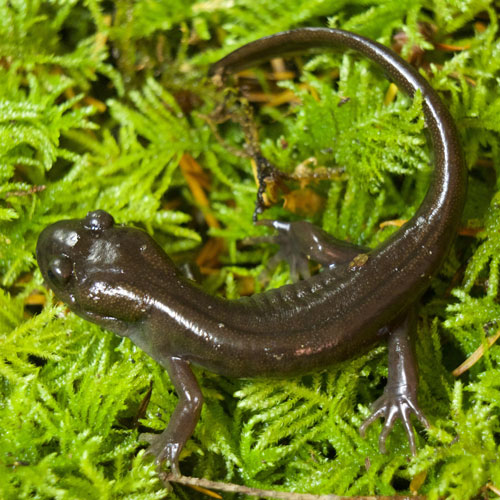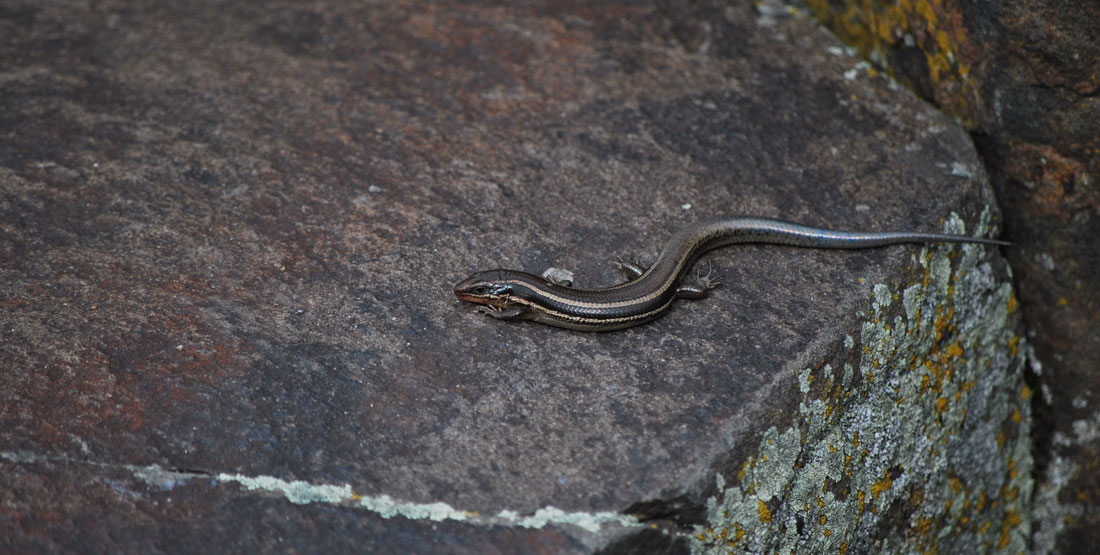Fast Facts
Where they live
- View a map of where they live.
- Western skinks can be found in eastern Washington, Idaho, from south-central British Columbia to southern Baja California, eastwards to western Montana, eastern Utah, north-central Arizona, and southern Nevada.
- Even though they can adapt to a wide variety of habitats, western skinks tend to live near water in dry open forests, shrub-steppe, and grassland.
- They tend to avoid heavy brush and dense forests.
What they eat
- Western skinks can eat a wide variety of foods, including crickets, beetles, flies, grasshoppers, spiders, and earthworms.
Breeding
- Between June and July, females dig a nest chamber a few centimeters deep in loose moist soil.
- They lay 2 to 6 eggs, which will hatch in late summer.
Cool Biology Facts
-
The western skink is the only lizard in Washington that has a bright blue tail, shiny smooth scales, and stripes running along the length of their body.
-
If caught by a predator, the western skink can detach its tail. The bright blue tail then moves vigorously around, distracting the predator while the skink tries to escape. The tail will eventually grow back, but oftentimes the new tail is darker and more oddly shaped than the original.
Threats
- There are no known major threats to western skinks and they are considered “least concern” due to their adaptability to a wide range of habitats, large distribution, and large stable populations.
- View their status on the IUCN Red List of Threatened Species.

Amphibians & Reptiles of Washington
Do you know where rattlesnakes live in our state? Or which salamander breathes through its skin? Explore the fascinating diversity of the 26 species of amphibians and 28 reptiles found in Washington state.

